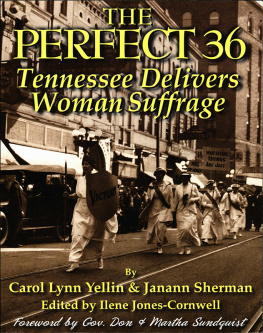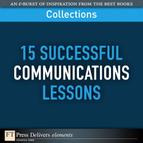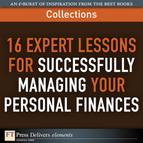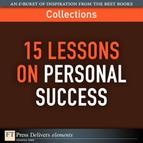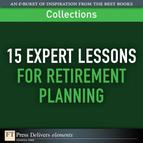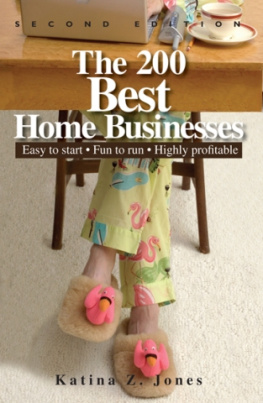Press Delivers Ft Press Delivers - Profiles of Remarkable Businesses (Collection)
Here you can read online Press Delivers Ft Press Delivers - Profiles of Remarkable Businesses (Collection) full text of the book (entire story) in english for free. Download pdf and epub, get meaning, cover and reviews about this ebook. year: 2010, publisher: Pearson Technology Group, genre: Home and family. Description of the work, (preface) as well as reviews are available. Best literature library LitArk.com created for fans of good reading and offers a wide selection of genres:
Romance novel
Science fiction
Adventure
Detective
Science
History
Home and family
Prose
Art
Politics
Computer
Non-fiction
Religion
Business
Children
Humor
Choose a favorite category and find really read worthwhile books. Enjoy immersion in the world of imagination, feel the emotions of the characters or learn something new for yourself, make an fascinating discovery.
- Book:Profiles of Remarkable Businesses (Collection)
- Author:
- Publisher:Pearson Technology Group
- Genre:
- Year:2010
- Rating:4 / 5
- Favourites:Add to favourites
- Your mark:
- 80
- 1
- 2
- 3
- 4
- 5
Profiles of Remarkable Businesses (Collection): summary, description and annotation
We offer to read an annotation, description, summary or preface (depends on what the author of the book "Profiles of Remarkable Businesses (Collection)" wrote himself). If you haven't found the necessary information about the book — write in the comments, we will try to find it.
Profiles of Remarkable Businesses (Collection) — read online for free the complete book (whole text) full work
Below is the text of the book, divided by pages. System saving the place of the last page read, allows you to conveniently read the book "Profiles of Remarkable Businesses (Collection)" online for free, without having to search again every time where you left off. Put a bookmark, and you can go to the page where you finished reading at any time.
Font size:
Interval:
Bookmark:

FT Press Delivers

The Editors of New Word City
Psychologically, McDonalds probably hit bottom early in 2003. Sure, it was still the biggest fast-food provider in the world. But the stock collapsed after the company reported its first-ever quarterly loss. Battered by critics (nutritionists, environmentalists, chauvinists, human rights activists, defenders of animals), nibbled at by new competitors (Subway, Sonic, Quiznos), undermined by overbuilding and a failure to adapt to changes in consumer habits and tastes, the giant was out of breath and sagging over its belt.
Behind the scenes, though, a turnaround had begun. A new team of leaders was out to rejuvenate the core brand, shed irrelevant activities, and adjust McDonalds operations to what the customer really wanted. This is the story of how they went about it, with copious lessons for any business faced with a similar need to bring new life to a lagging brand.
It was a formidable task, demanding changes in every phase of a worldwide enterprise with $23 billion in sales, 31,000 restaurants, and fully 1.6 million employees. But the new McDonalds team had patience, determination, and a Plan to Win. And in the next five years, while few outsiders noticed much change, the giant worked itself back into shapeleaning down, offering healthier options, dropping rigid rules in favor of more flexible operations, moving upscale in the market, and even developing the courage to expand in an economic downturn. We can all learn from the McDonalds story.
Fast forward to 2008. It was a year when the stock market as a whole lost more than a third of its value, but McDonalds shares gained nearly 7 percent. More than 58 million customers were served daily, up 2 million from the previous year. Revenue rose 3 percent to $23.5 billion, but profits jumped 80 percent to $4.3 billion.
McDonalds woes were long in the making. When Ray Kroc opened his first spin-off of the McDonald brothers California hamburger stand in 1955, he presented it as the worlds best quick-service restaurant. The menu was simple, and the emphasis was on speed along with the promise of getting something back for your dollar. But by the 1990s, customers were looking for something more for that dollar. The fare they were being offered at rival fast-food companies was tastier and more varied.
McDonalds first reaction was a bid to be everything to everyonea serious mistake, focused more on the competition than on its own customers. McDonalds brought forth a pizza. It responded to Quiznos with toasted deli sandwiches, and to longtime rival Carls Jr. with a new outsized burger called the Arch Deluxe. Even the venerable Big Mac was not immune to tinkering: There were no fewer than 14 subtle changes to the Big Macs vaunted secret sauce. None of these moves did much to lift sales. Even McDonalds Dollar Menu, launched nationally in 2002, was an effort to match similar value menus offered by Burger King, Taco Bell, and Wendys.
In resuscitating McDonalds, CEO Jim Skinner followed a one-page playbook known as the Plan to Win, written by James R. Cantalupo, who came out of retirement to pen it. Built around Five Pspeople, products, place, price, and promotionit can seem simple, even simplistic. But it represented a new and healthy focus on what the customer wanted rather than the competition. It also showed a far greater concern with the quality of the customers overall experience than the companys original stress on speed and price.
What really made the cure work, though, was the patience and determination with which Skinner and his leadership team executed the plan.
Those are two qualities that go a long way toward defining Jim Skinner. He was still in high school when he first worked behind the counter at a McDonalds. In 1971, after a stint in the Navy, he came back to the company as a management trainee and gradually rose through the ranks to take on various executive posts, supervising operations in Europe, Asia, the Middle East, and Africa. Two times he was a candidate for CEO; two times he failed to win the support of the companys board of directors. He eventually got the job but only after his two immediate predecessors passed away in less than 12 months.
In some quarters, he was expected to be strictly temporary. That was not his perception. I didnt think I would be CEO, he told Crains Chicago Business, but I always thought I could be.
Colleagues describe Skinner as a regular guy and a hands-on manager who is more at home talking with customers and checking out operations at a restaurant than presiding over a boardroom. His preferred lunch consists of a plain Quarter Pounderno ketchup, mustard, or pickle. He stays fit, still able to hold his own with much younger players during an occasional pickup basketball game. In high school, he made the wrestling squad, but at 5-foot 6-inches, the basketball team was out of reach. Ive been shooting over big guys my entire life, he once noted.
The Plan to Win was already the companys official roadmap when Skinner became chief executive, and he immediately announced, A leadership change doesnt mean a strategy change. He did, however, put together his own executive cadre to carry out that strategy, picking some of the companys best leaders.
The companys approach to product development had been essentially helter-skelter. Market research and product testing were rudimentary. We were more willy-nilly then, Skinner told a BusinessWeek reporter. The attitude was, well make it, and theyll buy it. But Skinner and his colleagues recognized that this Field of Dreams approach wasnt going to lift the company out of the frying pan. They proceeded to build up the food studio at company headquarters in Oak Brook, Illinois. (It now houses dozens of chefs, food technicians, and market researchers, and there are sister studios in Hong Kong, Paris, Munich, and elsewhere.) In extensive market tests, possible new products were graded not only on sales, but also on the margins they produced and their ease of preparation.
One of the major factors driving the fast-food business since the 1990s has been consumer demand for healthier choices on the menu. Critics took aim at high-calorie staples such as the Big Mac and the Quarter Pounder with Cheese. The book Fast Food Nation galvanized food activism at an intellectual and regulatory level, while the film, Super-Size Me, brought anti-fast-food messages to the masses.
McDonalds responded by adding healthier options to its menus, providing calorie counts, and promoting the chains offerings as one element in an active, healthful lifestyle. The super-size concept was downplayed and then abandoned. Chicken McNuggets, first introduced in 1983, were reformulated to use only lower-fat white-meat chicken, breaded with tempura batter. Kids were offered apple slices on the side (instead of French fries) and milk in cute bottle-shaped containers. Soon even promotions took on an aura of fitness: Adults buying a Healthy Meal of salad and water received free pedometers.
The company moved to increase and vary its chicken offerings. You can still get a Big Mac and large fries, but today McDonalds sells almost as much chicken2 billion pounds a yearas it does beef.
Other major changes in consumer behavior inspired more McDonalds product adjustments. An increased interest in snacking led the company to introduce hand-friendly snack wraps at $1.29 each. When the economy weakened, McDonalds strengthened its commitment to the Dollar Menu. That can be difficult as inflation rises; on occasion, the company has had to alter the composition of sandwiches (removing a slice of cheese, for example) to make them fit the one-dollar price point. But McDonalds has managed to keep the Dollar Menus contribution of 13 to 14 percent of total revenue year after year.
Next pageFont size:
Interval:
Bookmark:
Similar books «Profiles of Remarkable Businesses (Collection)»
Look at similar books to Profiles of Remarkable Businesses (Collection). We have selected literature similar in name and meaning in the hope of providing readers with more options to find new, interesting, not yet read works.
Discussion, reviews of the book Profiles of Remarkable Businesses (Collection) and just readers' own opinions. Leave your comments, write what you think about the work, its meaning or the main characters. Specify what exactly you liked and what you didn't like, and why you think so.



